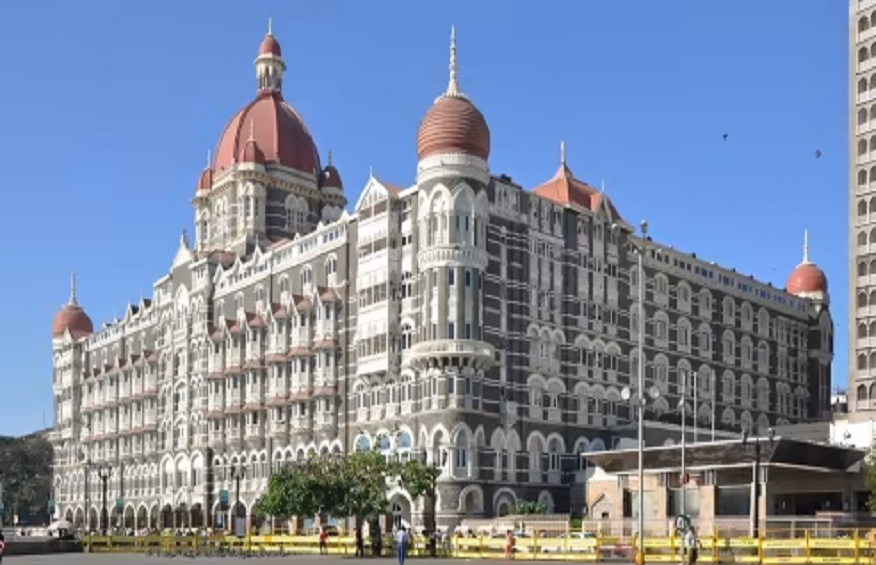Advice for surviving Mumbai on a first trip
The city I visited during my trip that created the most chaos in my mind so far is Mumbai. The traveler, whether tourist or worker, is never prepared for the shock wave of contrasts that are thrown at you with every step you take in this world. I want to tell you how my childhood dreams were subjugated and enhanced by a few moments from my first trip to India, teaching me some ground rules that I should have known before venturing into this reality.
In 2012, I was asked to participate in an international event in Mumbai to present new projects in the tourism sector. I took the opportunity to get an idea of the reality in which my grandfather had lived and of which I had heard so many stories.
I have always associated India with the smell of tea, mango and humidity that emanated from my grandfather Victor’s clothes when he returned from his long business trips to the land of tigers, to the stories of makeshift snake charmers who died on the roadsides and beaches of Goa in the 1970s, to images of monsoon floods and tales of impassable sectarian boundaries that separated rich from poor. All these images that I had in my head could finally have an encounter with reality.
When I took my first step in the tunnel connecting the Mumbai on a first trip plane to the ground, a puff of post-September monsoon humidity invaded my nostrils: it was the same smell that I could smell in the old suitcase of my grandfather full of labels. The first approach to this world therefore reassured me, because I thought I was ready and knew, although partially, this reality. Never has a thought been so wrong…
Beach-chowpatti-india
Collecting my luggage, I headed for a prepaid taxi to get to the hotel. Of course, I tried to queue with the other westerners, but the problem was that the locals were throwing themselves like crazy stones at the reservation desk. Talking to other people, we started thinking “maybe it’s just a coincidence, it won’t be like this everywhere, maybe there’s a problem that they can’t respect the waiting line… “. We were still virgins of the place and therefore could not know that every inch in India has to be won with sweat, blood and cunning.
After about thirty minutes of orderly waiting in line, I decided that if I wanted to have at least a slight chance of reaching the hotel, I needed to adopt a more aggressive attitude, and so I elaborated with my companion of arms, the Englishman Thomas who was on his way to visit a friend, a strategy to obstruct the side passage and facilitate the elimination of the queue. We then placed several trolleys on either side of the taxi reservation counter to create a restraint barricade against those trying to enter from the sides, and we finally managed to get the reservation ticket with the taxi number. driver.
Always use the prepaid taxi if you don’t want to get bogged down in tedious haggling over the fare, but if you want to have fun, always ask the driver to offer the fare and offer him a quarter of what ‘he asked. If he refuses, go to someone else, remember that for one thousand rupees (about eleven euros) you can find someone who agrees to show you around the city every day.
A word of advice: when you leave the airport, try not to go back, because in India all the entrances are guarded by the army, who will only let you in if you have a flight to catch. So always remember to bring your ticket printed on paper when you have to leave, otherwise… you won’t get in or you’ll waste hours talking to the military!
The noise coming out of the airport is deafening. In India, the horn is used to signal the most diverse activities and feelings, including being overwhelmed, bad mood, happiness, presence, the birth of a child, belonging to a group and a myriad of other things you never thought of. If you are in Mumbai traffic and there is silence, start worrying: something catastrophic is about to happen and it’s the end of the world! You will also notice that many vans display the sign “honk ok please” on the back, which is like saying “honk please because otherwise I feel lonely”
Truck-in-india-mumbai
After spending two hours in the car to cover a distance of 6.4 kilometers – yes, it’s true… I used to carry my luggage on my shoulders and walk – and discovered to my surprise that my suitcases were still securely anchored to the roof of the car with a sturdy clothesline, I entered the hotel.
If, on the other hand, you have no luggage, rely on a rickshaw driver who, for a few rupees, will weave through traffic like there’s no tomorrow. Of course, you will need to show the same courage that is needed to skydive.
Next time, I will tell you about pharaonic buffets and slums, two opposite aspects that coexist in Indian reality. I will leave you telling you that once I arrived in Italy, I experienced a particular psychological state, which I can assimilate by definition to the Stockholm syndrome, created by the noticeably traumatic, violent and unexpected experience that I lived in Bombay and which translates into an unexpected awareness of belonging there.

